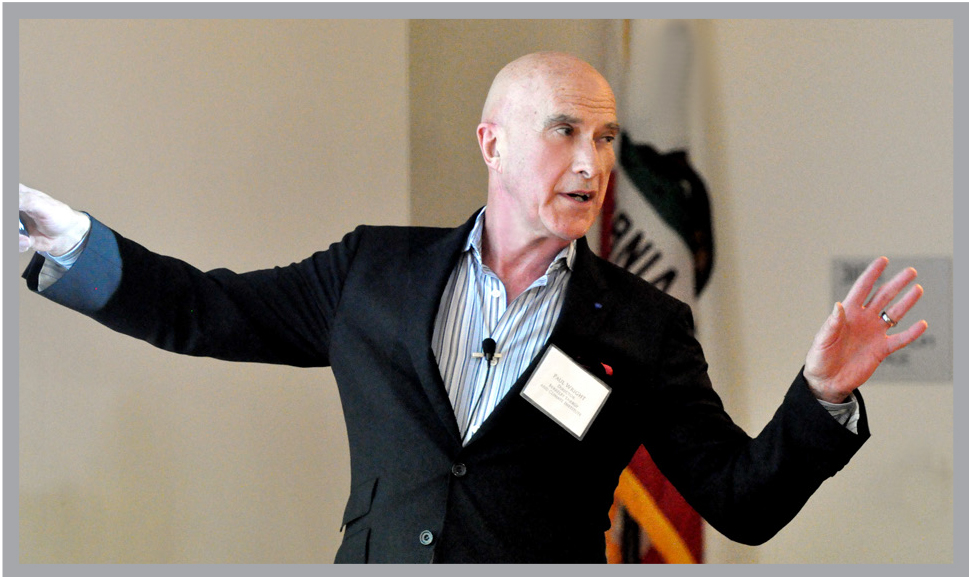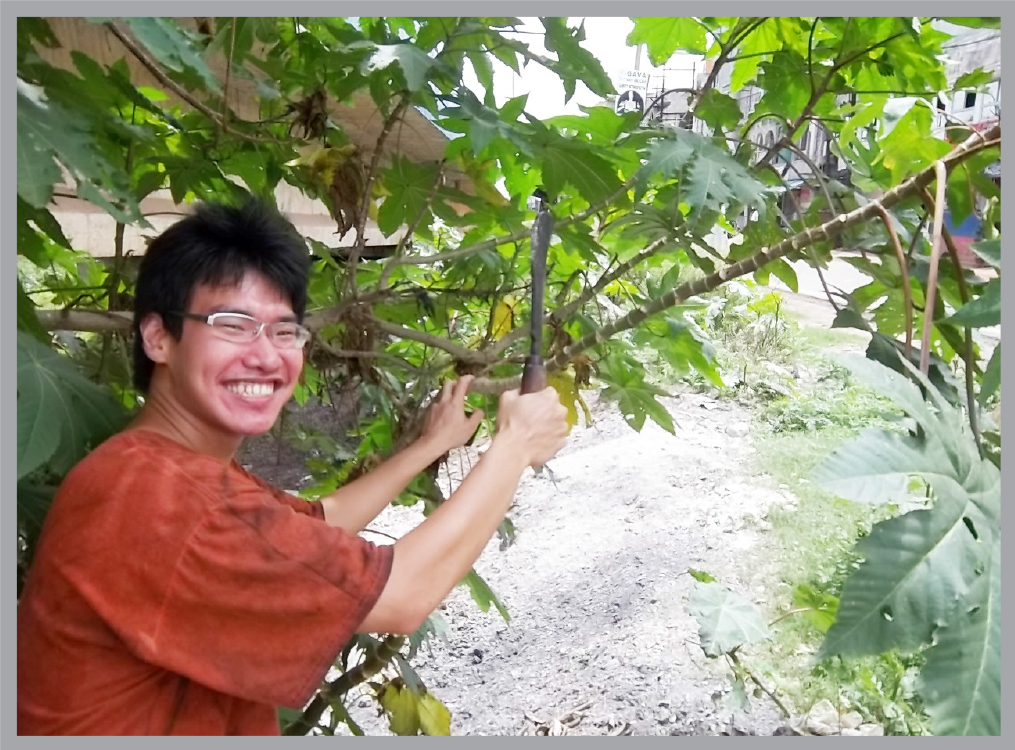Taking on the Biggest Challenge
If you want to get a good look down a hole, you might flick on a flashlight. Or, if you were Paul Wright as a kid, you might flip your bike upside down, point its handlebar into the hole and start hand-pedaling until the dynamo of the bike light brightens up the hole. “The bike light was my first experiment in energy harvesting,” Wright realizes.

His ideas for generating electricity have matured, but he’s still drawn to the novel. Wright teamed up with UC Berkeley’s wireless sensor experts Kris Pister, David Culler, Jan Rabaey and “smart building” guru researcher Ed Arens in an NSF-funded project to convert readily available vibrational energy — such as the shake of a building from a rumbling truck —into electrical current. The electricity, in turn, could power bottle-cap-sized environmental sensors developed at Berkeley to control lighting, heating and air circulation in buildings.
Wright sees himself as a “builder of things.” He is best known for his research on computer-aided design/computer-aided manufacturing (CAD/CAM) technology, innovations enabling a designer to create a component at the computer that instructs robots and machine tools to manufacture the product. He was among the first to devise and send instructions over the Internet (then the ARPANET) to carry out this feat.
“We did the computer drawing at Carnegie Mellon in Pittsburgh, and the part was machined-out in aluminum on the twelfth story of a building on Broadway at NYU,” Wright says.
In the early 1990s, he says, a silver-haired tradesman was often looking over the designers’ shoulders, telling them when the computer-aided design was overreaching. “You can come up with all sorts of things in software that the machine can’t make,” Wright says. So we then achieved this with expert system technologies.
The early work led to his more refined “CyberCut/CyberBuild” system. Along with other advances, it propelled the pairing of internet-based design and flexible robotics-controlled manufacturing, now used to produce cameras, computers and cars. CyberCut and other innovations led to his election in 2007 to the National Academy of Engineering.
His interest in energy-saving strategies and his focus on advancing manufacturing technologies led to his appointment as the first director of the Berkeley Energy and Climate Institute (BECI), founded in 2011 to spur collaborations among Berkeley researchers and between the Berkeley campus and LBNL on a range of research to advance energy-efficient and environmentally-sensitive innovations and sound environmental policy.
“If you combine the campus with Berkeley Lab, we have more research and education resources than any other university in the world,” Wright says. “We are internationally recognized for expertise from engineering and earth sciences to climate research, biological sciences and environmental policy. So BECI was founded to harness this intellectual force to solve the world’s biggest challenge. “We need to protect the climate, but everyone wants economic growth. It’s a dilemma we have to solve. I think Berkeley, along with a few other remarkable institutions, can do that.”

As envisioned, projects under the BECI umbrella range widely. The Institute aims to provide a coordinating hub for all of Berkeley’s energy and climate efforts to ensure the integration of science, engineering, social science, market, and policy research.
BECI’s Innovation Seed Fund in Energy and Climate Research supports faculty projects in renewable energy, energy efficiency, and climate research. The fund has seeded the development of numerous cutting-edge research projects that have resulted in significant following funding.
Danny Cullenward, PhD and JD, is a Philomathia Research Fellow at BECI, focused on developing science-based climate policy. One of his projects looks at a problem called resource shuffling. To the extent that California companies are allowed to swap their dirty electricity imports for clean supplies from neighboring states, the state’s carbon market will not reduce net emissions to the atmosphere. Danny works to document the problem, engage public stakeholders, and develop regulatory solutions.
Jennifer Granholm, former governor of Michigan and now a leading law and policy expert at Berkeley, works with BECI colleagues on the American Jobs Project, analyzing the links between the growth of clean energy and the development of new jobs in 12 states. Granholm holds the position of Distinguished Practitioner of Law and Public Policy.
Mechanical engineering PhD candidate, Rich Winslow and his fellow designers in the Advanced Manufacturing for Energy lab are exploiting new “3-D dispenser” printing technology to produce paper-thin batteries, rechargeable wireless sensors and capacitors to perform energy-efficient tasks and energy storage beyond the reach of bulky, conventional electrical components.
A signature BECI program to engage undergraduates is the Cal Energy Corps, created by Vice Chancellor for Research Graham Fleming to give students the chance to dive into research and on-the-ground implementation of energy and environment-sensitive strategies around the world. A competition each spring yields a cadre of talented undergraduates who head out to work on summer internship projects from South America to Asia and beyond.
During her 2013 summer internship, Heather Hughes worked at Academia Sinica in Taiwan, helping create new materials for solar cells. Cyrus Blankinship got a placement with Energy Biosciences Institute at UC Berkeley, and worked on a project to promote climate smart land use in Brazil. And Lionadi The spent eight weeks at the Indian Institute of Technology in Kharagpur, working with a team developing biofuels. “Doing research in India was a once-in-a-lifetime experience,” he says. “I got to learn how people in other countries work their way around bioenergy problems by using different methods — even using their culture to create the optimum results for research. It was such a positive experience to see the role that science can play in promoting green solutions.”
The Cal Energy Corps, like the overall BECI effort, brings together researchers for a team experience, exchanging different types of expertise. What excites Paul Wright as BECI director, he says, is seeing the collaborations come together.
“It’s our ability to develop important projects that would never happen without the Institute’s breadth of expertise. I think if we collaborate with focus and vision we can make enormous progress toward meeting the world’s most pressing challenge: clean energy for balanced economic growth on a sustainable planet.”
_______________________________________________________
Berkeley Energy and Climate Institute (BECI) - http://beci.berkeley.edu/
2015 Philomathia Forum - http://vcresearch.berkeley.edu/philomathiacenter/forum/2015-energy-and-environment
BECI Innovation Seed Fund in Energy and Climate Research - http://vcresearch.berkeley.edu/energy/innovation-seed-fund
Cal Energy Corps - http://beci.berkeley.edu/cal-energy-corps/
